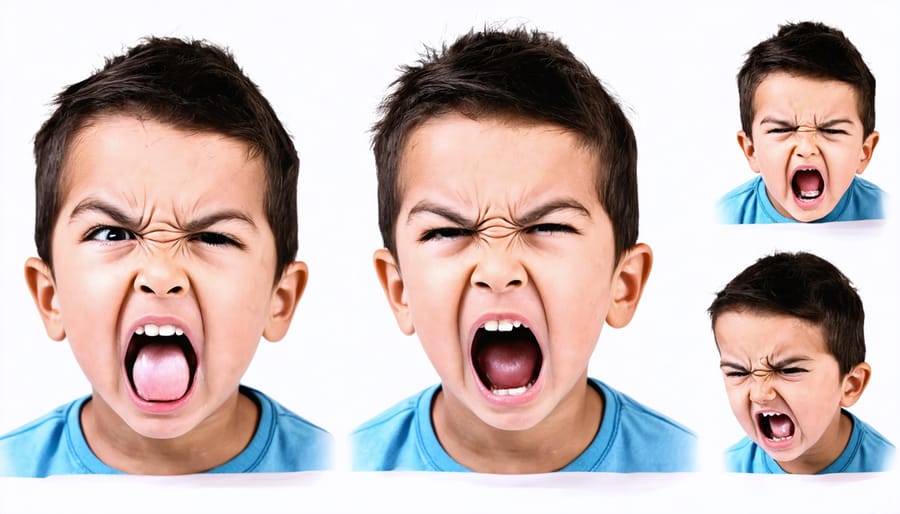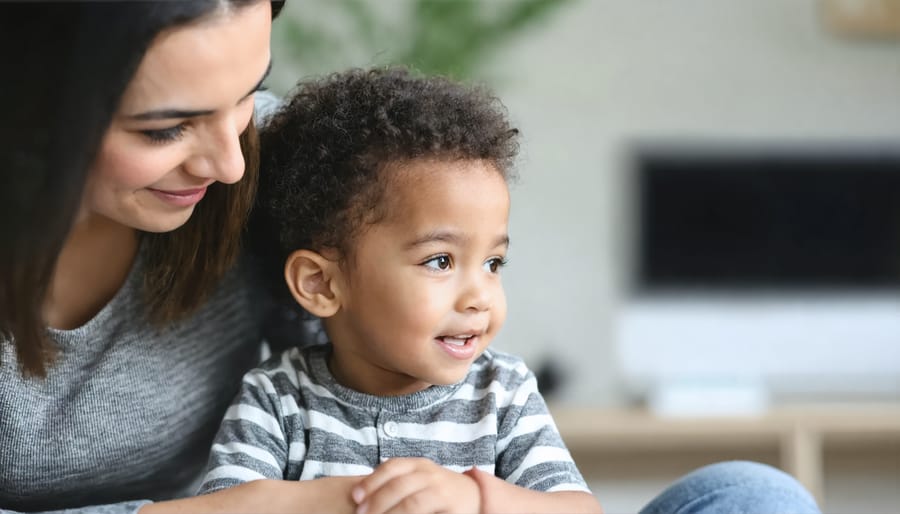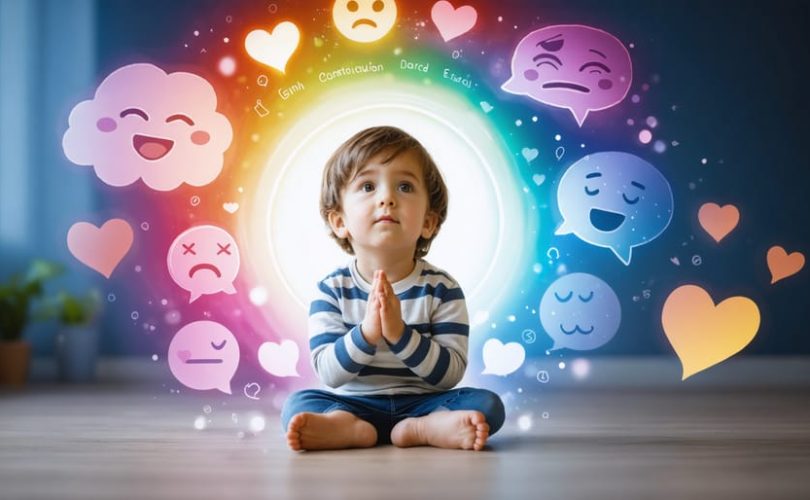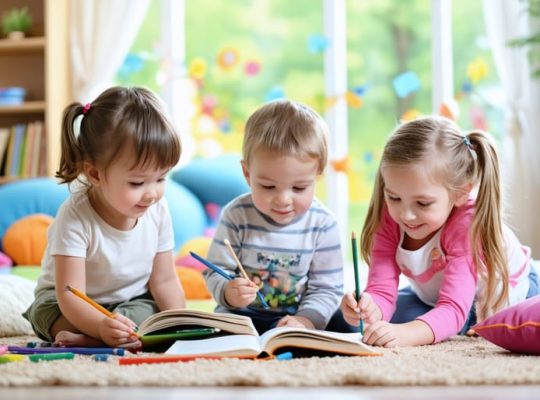Emotional well-being shapes every aspect of our lives, from how we handle daily challenges to the way we build meaningful relationships. It’s more than just feeling happy – it’s about developing a healthy relationship with our full range of emotions and having the tools to navigate life’s ups and downs with resilience and self-awareness. For parents and educators, understanding emotional well-being is particularly crucial as it forms the foundation of a child’s mental health, social development, and future success.
Picture emotional well-being as an internal compass that helps us understand ourselves and connect with others. When we’re emotionally well, we can recognize and express our feelings appropriately, bounce back from setbacks, and maintain stable relationships. This doesn’t mean always being positive – rather, it’s about accepting and managing all emotions in a healthy way.
As we explore this vital aspect of human development, we’ll discover how emotional well-being intertwines with communication skills and learn practical strategies to nurture both in children and ourselves.
What Emotional Well-being Really Means for Children

Key Components of Emotional Well-being
Emotional well-being is built on several interconnected components that work together like pieces of a puzzle. Self-awareness serves as the foundation, enabling children and adults to recognize and understand their feelings. This awareness helps us identify when we’re happy, sad, frustrated, or excited, making it easier to respond appropriately to different situations.
Emotional regulation follows as another crucial element, allowing us to manage our feelings effectively. Just as Dr. Sarah Thompson, a child psychologist, often says, “It’s like having an internal thermostat that helps keep our emotions at a comfortable temperature.”
Resilience forms the third key component, giving us the strength to bounce back from challenges and setbacks. This involves developing healthy coping mechanisms and maintaining a positive outlook even when things get tough.
Other essential elements include empathy, which helps us connect with others’ feelings, and self-compassion, teaching us to be kind to ourselves during difficult times. Together, these components create a strong foundation for emotional health, supporting both personal growth and meaningful relationships with others.
Signs of Healthy Emotional Development
Children with healthy emotional development display several recognizable signs that parents and caregivers can observe. They show confidence in expressing their feelings, both positive and negative, in age-appropriate ways. You might notice them using words to describe their emotions rather than just acting out physically when upset.
These children typically bounce back from disappointments and setbacks with reasonable resilience. They’re able to form and maintain friendships, share with others, and show empathy when friends are upset. You’ll often see them engaging in play with peers and demonstrating appropriate social skills for their age.
Another positive indicator is their ability to self-soothe when frustrated or anxious. They might seek comfort from trusted adults but can also use simple coping strategies like deep breathing or taking quiet time. They show curiosity about others’ feelings and can recognize basic emotions in themselves and others.
As Dr. Sarah Thompson, child psychologist, notes, “Emotionally healthy children aren’t always happy – they experience the full range of emotions but can manage them effectively with support.”
Look for their willingness to try new things, ask for help when needed, and show pride in their accomplishments. These are all wonderful signs that your child is developing emotional well-being.
The Communication-Emotion Connection

How Emotions Impact Communication
A child’s emotional state profoundly influences their ability to communicate effectively with others. When children feel safe and emotionally balanced, they’re more likely to express themselves clearly and engage positively with peers and adults. However, when they struggle to navigate big emotions, their communication skills often suffer.
Think of emotions as the foundation of a house – when the foundation is stable, everything built on top remains secure. When children experience overwhelming feelings like frustration, anxiety, or excitement, they might struggle to find the right words, maintain eye contact, or listen effectively. Some children might become completely non-verbal when upset, while others might express themselves through challenging behaviors.
Dr. Sarah Chen, a child psychologist, explains, “Children’s emotional state directly affects their brain’s ability to process and produce language. When they’re feeling overwhelmed, the emotional part of their brain can override the communication centers.”
Parents often notice this connection during everyday moments. A tired and frustrated child might have difficulty expressing their needs clearly, while a happy, well-rested child typically communicates with greater ease. Understanding this relationship helps adults provide better support by first addressing the emotional needs before expecting clear communication.
Recognition of these emotional impacts allows caregivers to create supportive environments where children feel safe expressing themselves, leading to stronger communication skills and healthier relationships overall.
How Communication Shapes Emotional Growth
Communication serves as a vital bridge between our inner emotional world and our connections with others. From a child’s first cry to complex adult relationships, the way we express and receive emotional messages shapes our psychological development and well-being.
Dr. Sarah Chen, a child development specialist, explains, “When children learn to effectively communicate their feelings, they develop stronger emotional awareness and regulation skills. It’s like building emotional muscle memory.” This connection between communication and emotional growth becomes evident in everyday interactions, whether it’s a toddler learning to express frustration through words instead of tantrums or a teenager discussing complex feelings with trusted adults.
The quality of our communications deeply influences how we process and understand emotions. When parents and caregivers respond empathetically to a child’s emotional expressions, they create a safe space for emotional exploration and growth. This supportive environment helps children develop confidence in sharing their feelings and learning from emotional experiences.
Consider Maria, a preschool teacher who noticed significant emotional growth in her students after implementing “feeling circles” where children practice expressing emotions through words and stories. “The children became more empathetic towards each other and better at managing their own emotions,” she shares.
Through open, honest, and supportive communication, we build the foundation for lasting emotional well-being, creating pathways for understanding ourselves and connecting meaningfully with others.
Supporting Your Child’s Emotional Well-being Through Communication
Creating Safe Spaces for Expression
Creating a safe emotional space for children begins with consistent, non-judgmental responses to their feelings. When children know their emotions won’t be dismissed or criticized, they’re more likely to open up about their experiences. Start by designating quiet, comfortable areas in your home or classroom where children can retreat when feeling overwhelmed.
Listen actively and maintain eye contact when children share their feelings. Simple acknowledgments like “I understand you’re feeling sad” validate their emotions and encourage further expression. Avoid rushing to fix their problems; instead, let them know it’s okay to feel what they’re feeling.
Establish regular check-in routines, such as daily “feeling talks” during dinner or morning circle time in class. Use creative tools like emotion charts, journals, or art supplies to help children express themselves in ways that feel natural to them.
Remember to model emotional expression yourself. When appropriate, share your own feelings and how you manage them. This shows children that expressing emotions is a normal, healthy part of life and helps create an atmosphere of trust and understanding.

Active Listening Techniques
Active listening involves more than just hearing what your child says – it’s about creating a safe space where they feel truly understood and valued. When your child shares their feelings, maintain eye contact and get down to their physical level, showing them they have your complete attention.
Practice reflective responses by repeating back what you’ve heard: “It sounds like you felt sad when your friend didn’t want to play with you today.” This technique validates their emotions and helps ensure you’ve understood correctly.
Avoid rushing to fix their problems or dismissing their feelings with phrases like “don’t cry” or “it’s not a big deal.” Instead, acknowledge their emotions with supportive statements such as “I understand why that would make you feel frustrated” or “It’s okay to feel disappointed.”
Pay attention to non-verbal cues – body language, facial expressions, and tone of voice often communicate more than words alone. When children feel heard, they’re more likely to open up about their feelings in the future.
Remember to be patient and create regular opportunities for conversation, whether during daily activities like meal times or through special one-on-one moments. These consistent interactions build the foundation for strong emotional communication and trust.
Modeling Healthy Emotional Communication
Parents play a crucial role in shaping their children’s emotional intelligence by modeling healthy communication patterns. When you express your own feelings openly and appropriately, you create a safe space for your child to do the same. Start by naming your emotions out loud: “I’m feeling frustrated right now, but I’m going to take a deep breath and think about this calmly.”
Practice active listening by maintaining eye contact, acknowledging your child’s feelings, and responding with empathy. Instead of dismissing emotions with phrases like “don’t cry” or “it’s not a big deal,” try validating their experience: “I can see why that made you sad. Would you like to talk about it?”
Share your own emotional coping strategies with your children. For example, “When I feel overwhelmed, I like to take a quiet walk or draw in my journal.” This transparency supports their emotional growth and helps them develop their own healthy coping mechanisms.
Remember to apologize when you make mistakes in your own emotional expression. This shows children that it’s normal to have difficult feelings and that we can learn from our emotional missteps. Create regular family check-ins where everyone can share their feelings in a judgment-free environment.
Supporting a child’s emotional well-being is an ongoing journey that requires patience, understanding, and consistent effort. As we’ve explored throughout this article, emotional well-being forms the foundation of a child’s mental health, social relationships, and future success. By creating safe spaces for emotional expression, practicing active listening, and modeling healthy emotional behaviors, we can help children develop strong emotional intelligence and resilience.
Remember that every child’s emotional journey is unique, and there’s no one-size-fits-all approach. What matters most is maintaining open lines of communication and showing unconditional support as children navigate their feelings. Whether through daily check-ins, emotional vocabulary building, or simply being present during challenging moments, your consistent involvement makes a significant difference.
Don’t hesitate to seek professional guidance when needed, as supporting emotional well-being sometimes requires additional expertise. By working together – parents, teachers, and caregivers – we can create environments where children feel safe, understood, and equipped to handle life’s emotional challenges. Your commitment to understanding and nurturing emotional well-being today paves the way for your child’s healthier, more balanced tomorrow.







